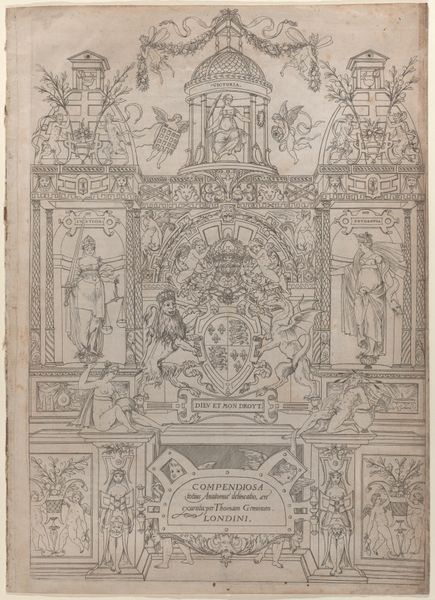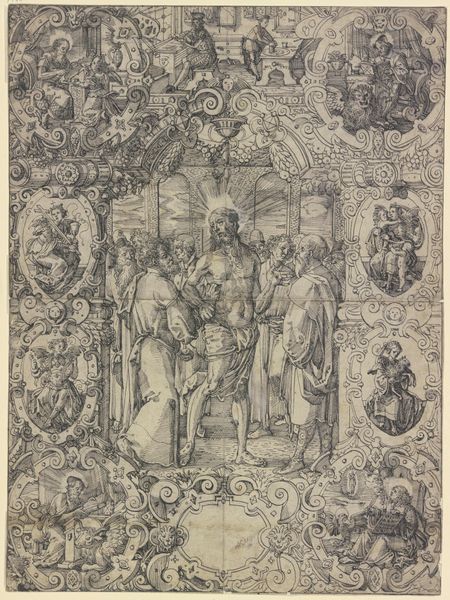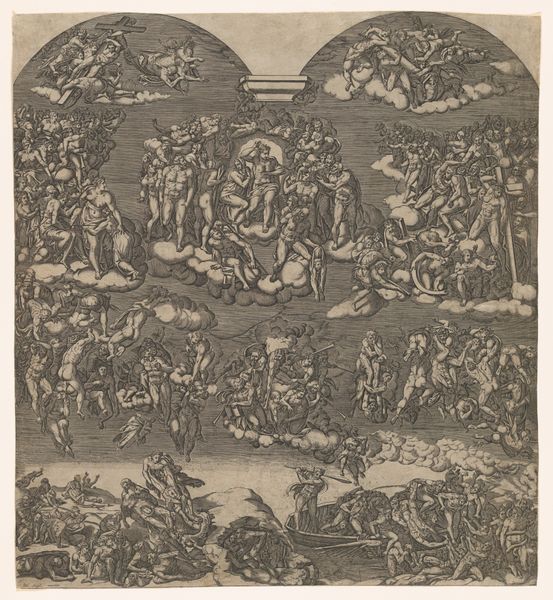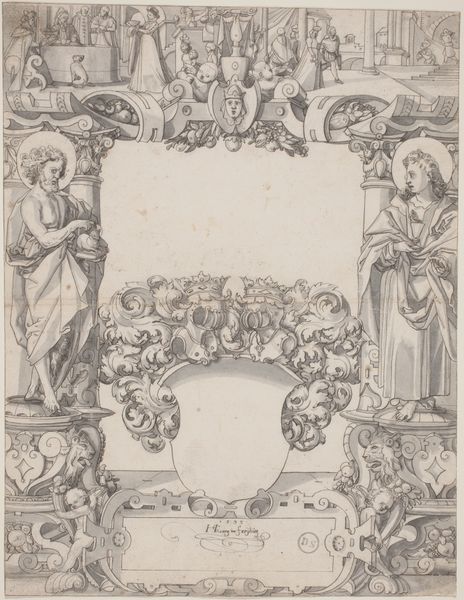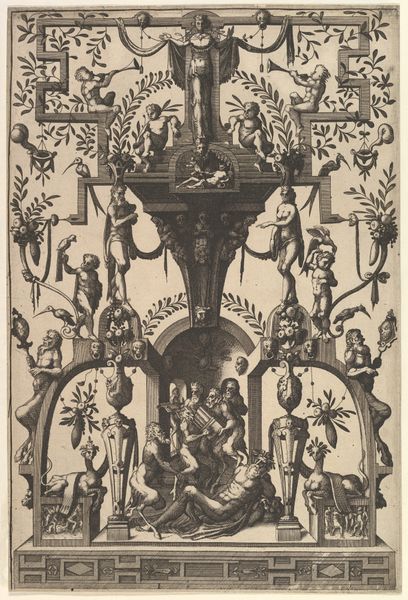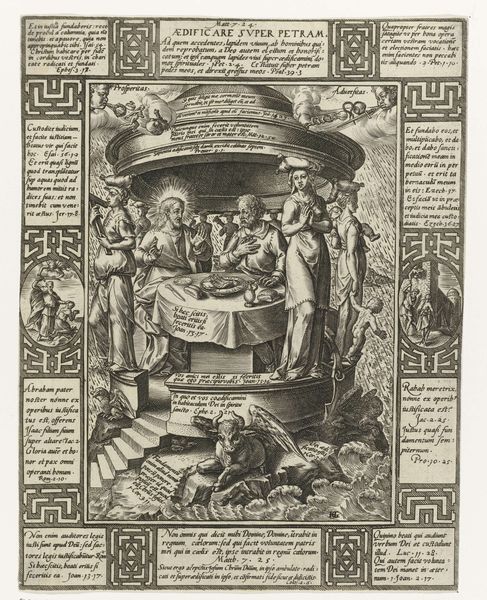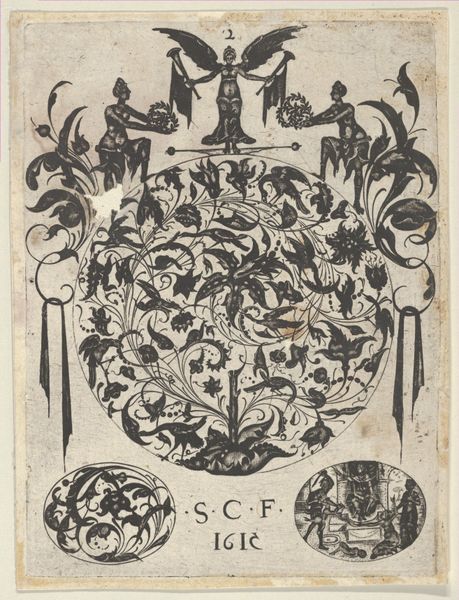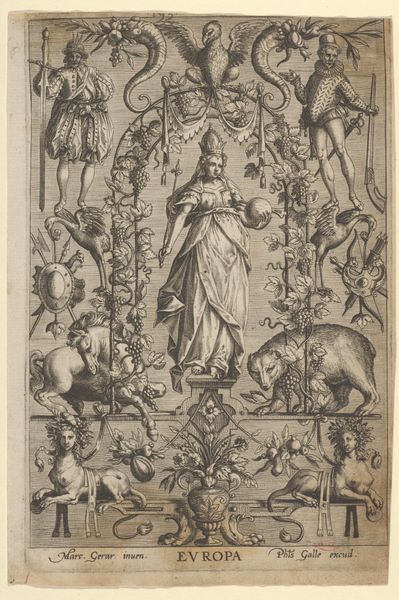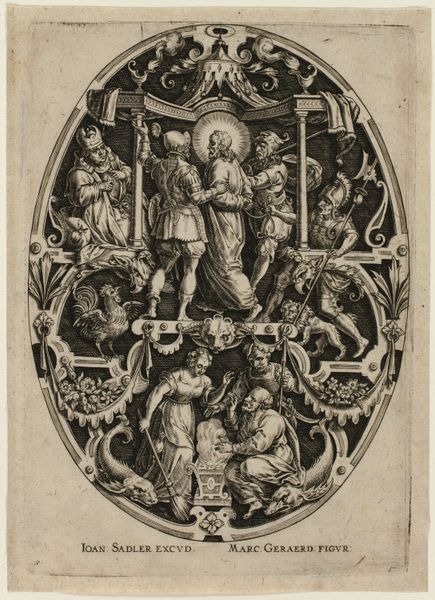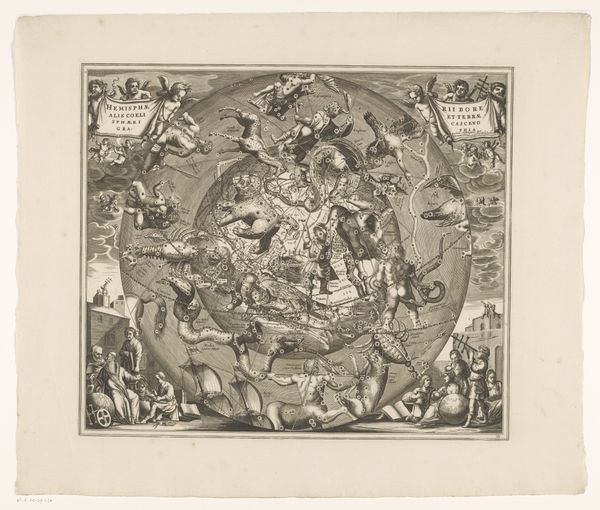
Classical Allegory with the arms of the Ochsenfelder 1534 - 1562
0:00
0:00
drawing, print, etching, paper, ink
#
drawing
#
water colours
#
allegory
# print
#
etching
#
figuration
#
paper
#
11_renaissance
#
ink
#
history-painting
#
northern-renaissance
Dimensions: Sheet: 9 13/16 × 7 1/4 in. (25 × 18.4 cm) Mount: ca. 14 3/16 × 10 1/16 in. (36 × 25.5 cm)
Copyright: Public Domain
This is "Classical Allegory with the arms of the Ochsenfelder," made by Virgil Solis in the 16th century. It's an engraving, meaning the image was incised into a metal plate, likely copper. Ink was then applied, and the plate pressed onto paper. The material here is critical to understanding the image. Printmaking allowed for the relatively quick reproduction of images. This was essential for disseminating ideas in the Renaissance, particularly as literacy increased. The sharp lines and precise detail we see were possible because of the engraver's skill with metal. Solis was part of a workshop system, so this print also testifies to the division of labor characteristic of early modern Europe. The act of printing itself, with its reliance on mechanical reproduction, speaks to the rise of a new kind of visual culture, one that emphasized distribution and accessibility. This is where art begins to meet the wider world of commerce and communication.
Comments
No comments
Be the first to comment and join the conversation on the ultimate creative platform.


